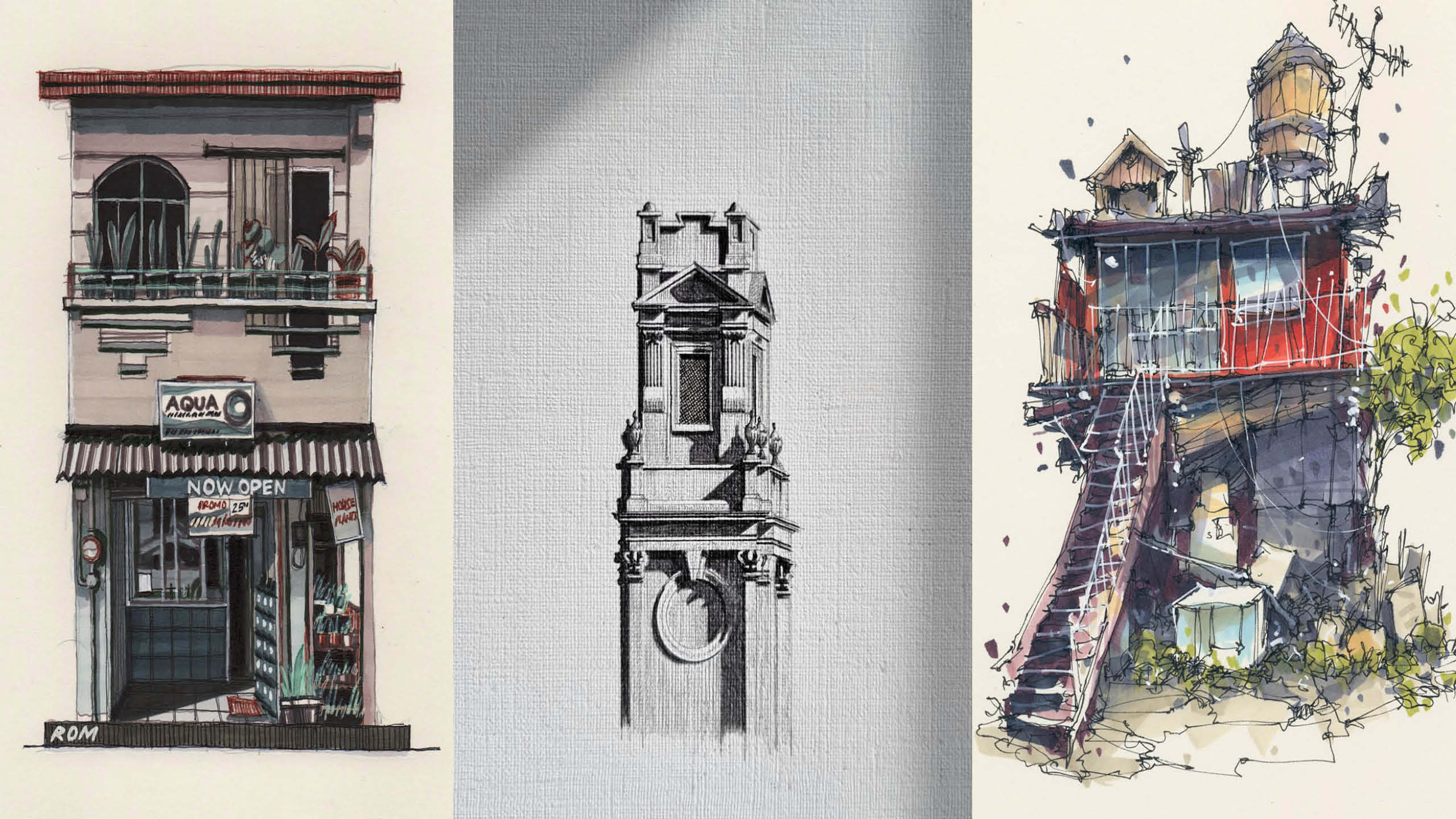
Tales of Inspiration: The Artist and Architecture
Taking the occasional walk is an underrated activity in this day and age. Without the shine of phone screens blinding the eyes, the mind can be reinvigorated by sites and things made by nature or human hands. For some people, the sight and feeling of being with other humans are enough to remind them about the lightness of the world, but for some, architecture can become the medicine to a tired mind.
According to neuroscientist, author, and design consultant, Collin Ellard who researched the psychological impact of design at the University of Waterloo in Canada, people are strongly affected by building facades. Ones that are complex and interesting affect people in a positive way while simple and monotonous facades birth negative effects like boredom and eventually depression. Complex designs meanwhile can create happiness. In a world where there’s a lack of color or a vibe of joyfulness, people can also be drained of the hidden reservoir of zest they were born with. In this, architecture has a vital role in creating spaces and buildings that inspire good feelings and serve as places that create good memories. As Zaha Hadid once stated,
“Architecture should be able to excite you, calm you, and make you think, do the spaces around you have a conversation with you, or do you enter a space, and it affects your mood (positively or negatively)?”
For many people, architecture has become a muse that helps put color and life into a canvas. Three of these are a few artists among many who have gained large followings online for their illustrations depicting architecture.
Rommel Cahilo (@rcdraws)
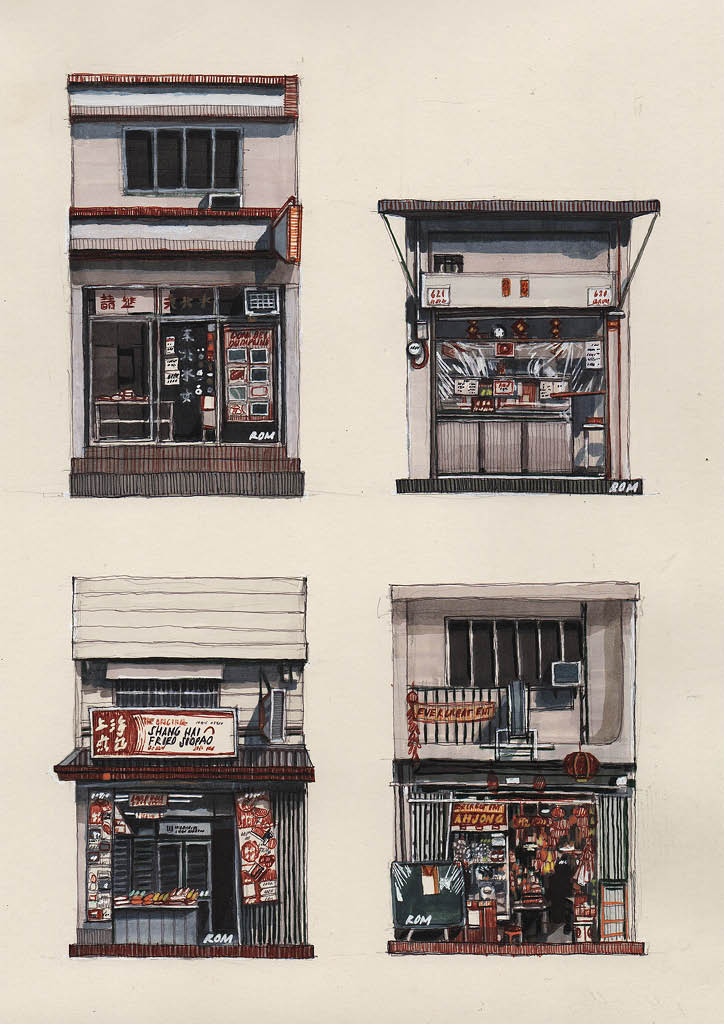
An architect and artist based in Pasig, Rommel is famous on Twitter and Instagram for the traditional drawings that use brown pens and grey markers to illustrate store facades and urban landscapes. Rommel is a graduate of the Polytechnic University of the Philippines – Sta. Mesa and is currently working as a design lead for a design and project management company. As a pastime and sideline Rommel draws these urban landscapes and facades that have gained the hearts of thousands not just in the Philippines but abroad as well. For inspiring names, Rommel mentions artists Chris Dove–an architect and visiting lecturer based in London, and Mark Poulier–a pen and ink artist based in Melbourne.
“I’ve been drawing traditional art since I was a kid!” Rommel says, “Never tried digital art (if Vray renders are not included) but I’m willing to try if there’s a chance.”
The drawings started pouring out when he resigned from work in 2021 and was advised by his doctor to do more morning walks. Obediently following this advice, the new routine Rommel had adapted turned into a walk where inspiration came in the form of the neighbors’ houses and stores from the palengke.
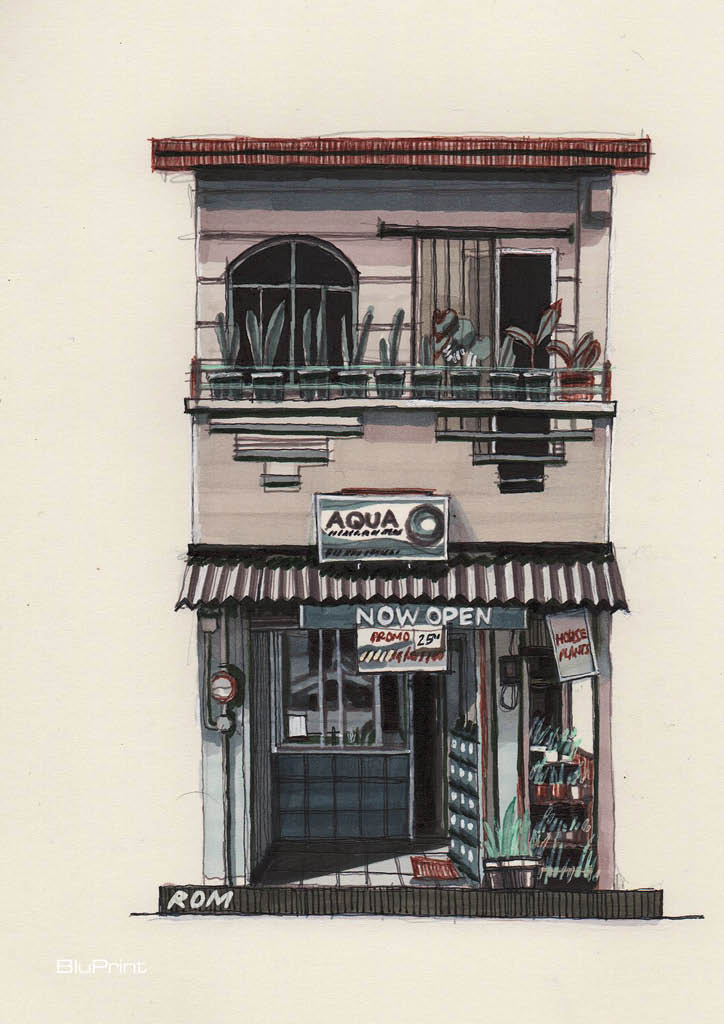
“I realized I wanted to draw these. Not just for leisure but to document the nearby stores and houses especially those somewhat significant to the family.”
Rommel has been a licensed architect for five years now and this familiarity with architecture’s complex design and the process of designing is one of the reasons he still draws.
“I have so many favorite pieces. I’m a fan of my own work. Most of them are commissioned works because the stories behind why they want them to be drawn are so inspiring at a personal level. But to answer the question, the one that got the most likes on Twitter is my most favourite work so far because it involves my parent’s dish at the same time many people relate to it.”

The sinigang drawing mentioned is one of the works that started it all and became one of the artworks that propelled him into making more related pieces like the compilation of random store facades.
“My initial intent in drawing store facades and urban landscapes is to document my neighborhood. All rooted to nostalgia also, that someday when I get to see my sketchbooks again, I get to remember these places I’ve been to, the neighborhood I lived in for the past years. What changes happened, will I still be in this neighborhood in the next few years? It is when I shared my works online that people also shared the same feelings because my drawings triggered memories from their childhood, neighborhood, and past experience.”
So far, Rommel has shown his artwork in two galleries now with the first one being the Space Encounters Gallery.
Chris Henton (@ch.illustrates)
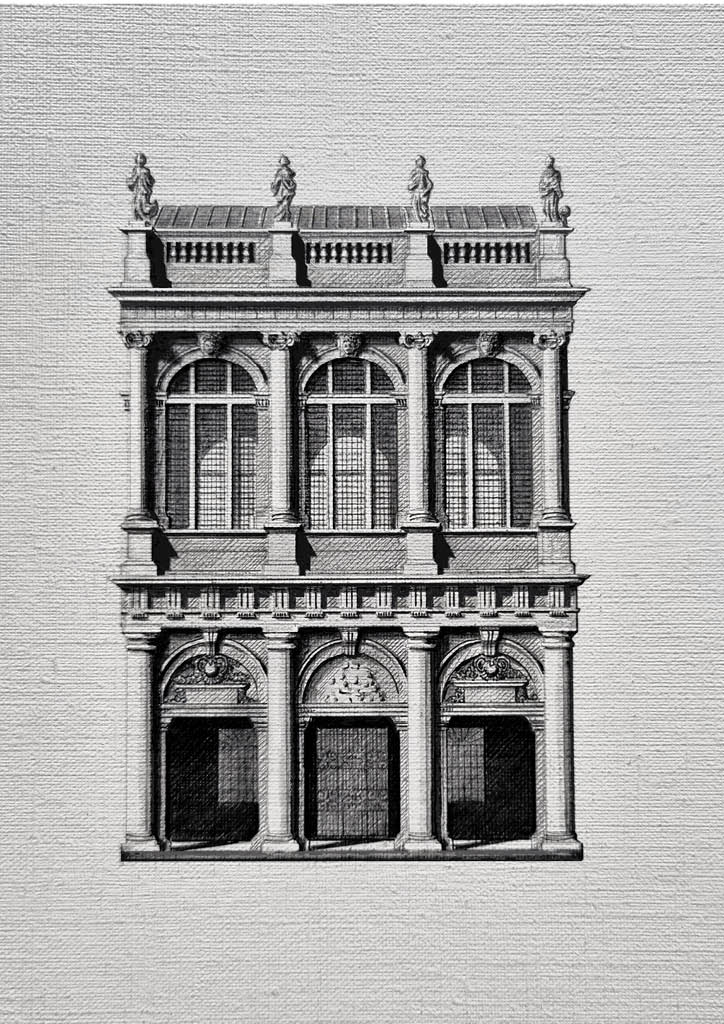
An architectural illustrator from Scotland, Chris Henton currently resides in London and is known by thousands for the pen and pencil illustrations that focus on light and shadow to bring architecture to life and to add character to the illustrations. As an artist who loves traditional drawing, Chris’ illustrations are all drawn with graphite pencils and a touch of fine liner pens that can sharpen some shadows. With this combination of pen and pencil, Chris’ work portrays proportionally accurate and highly detailed drawings of buildings and monuments.
“I think my drawing of St Paul’s cathedral with an exaggerated amount of contrast and shadow was a piece that first became popular.” Chris says, “When I draw recognizable landmarks, they seem to be popular as they can spark a memory of a time and place for a lot of people.”
For Chris, the structure and symmetry involved in architecture are the key components that make drawing these illustrations interesting and fun.
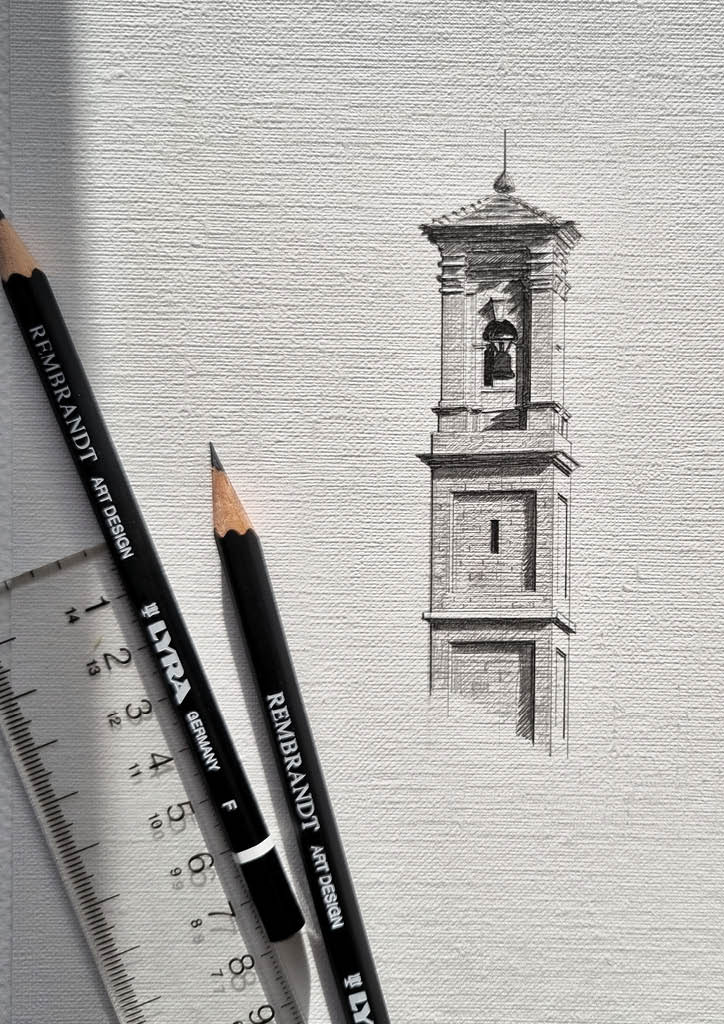
“I enjoy figuring out how a building is composed of different elements and then ensure I get the perspective and dimensions right so that it looks accurate…I’m always spotting architectural features when I’m out and about as well as trying to learn a bit about the stories behind buildings.”
Chris’ work has been shaped by studying history at his university combined with a love for travel and architecture. Among his travels, Rome became the inspirational muse due to its invigorating Renaissance architecture combined with ancient Roman history and walks further romanticized by great food and delicious ice cream.
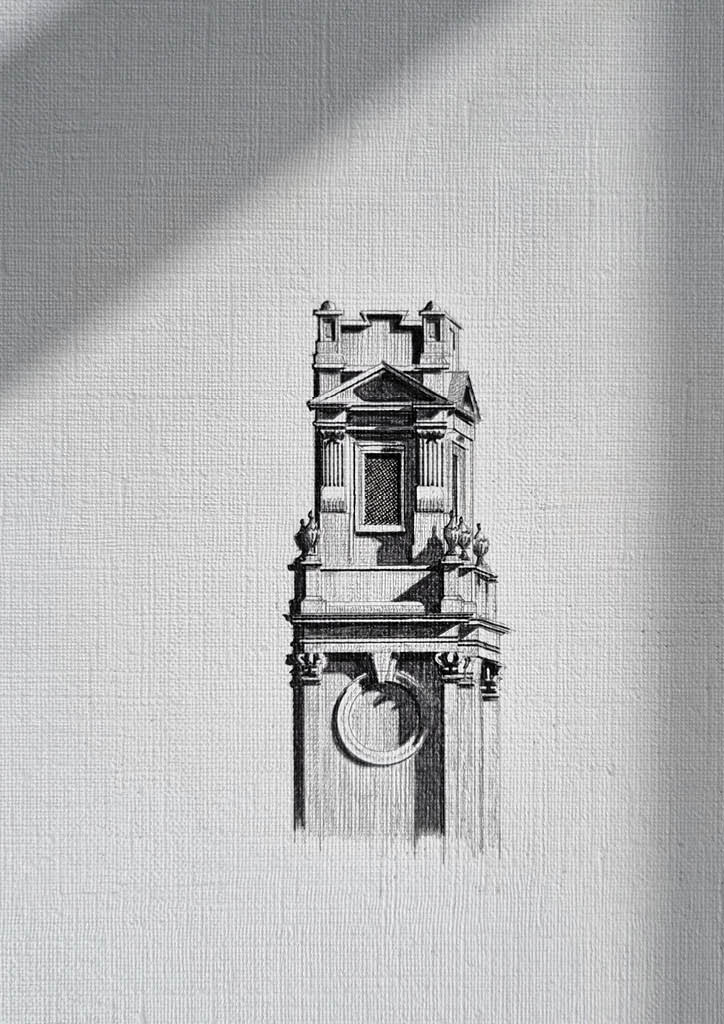
“I want to encourage people to take a second look at their surroundings. To look up at the intricate details on buildings that can so easily be missed. I also love to learn a bit about the history of the buildings I draw. I feed my curiosity by drawing what grabs my attention, and if that helps to spark interest in other people then that’s incredible!”
Chris’ work hasn’t been featured in any galleries yet but his inspiration, Liam Hipple–a pen and ink artist who also specializes in highly detailed architectural illustration is a constant source of inspiration.
“His insane level of precision in architectural drawings offers an example of the level which I am striving to one day reach!”
Albert Kiefer (@housesketcher)

A visual artist living with his family in the Netherlands, Albert Kiefer has gained a following of thousands for his colorful illustrations depicting random architecture from various countries. Among these countries, he states that Japan had some of his favorite architecture due to their interesting additions, details, and sometimes chaotic arrangements.
“I just completely fell in love with that type of architecture with all the interesting details, additions, and sometimes chaotic arrangements. So much to see and discover…I totally love that!”
His daily work involves creating illustrations that communicate ideas and concepts that visualize the past, present, and future–a passion-filled profession that’s given his life extra thrill and joy.
As someone who enjoys discovering new fields of expression to explore, Albert is an artist who combines both traditional and digital drawing.
“I think that the magic, at least for me lies in combining both directions.” he says, “It balances me out as an artist and both traditional and digital work allow me to keep discovering new fields of expression to explore. But I must say that I was taken completely by surprise to see what my traditional sketching has given me over the past seven years. That is absolutely an incredible journey!”
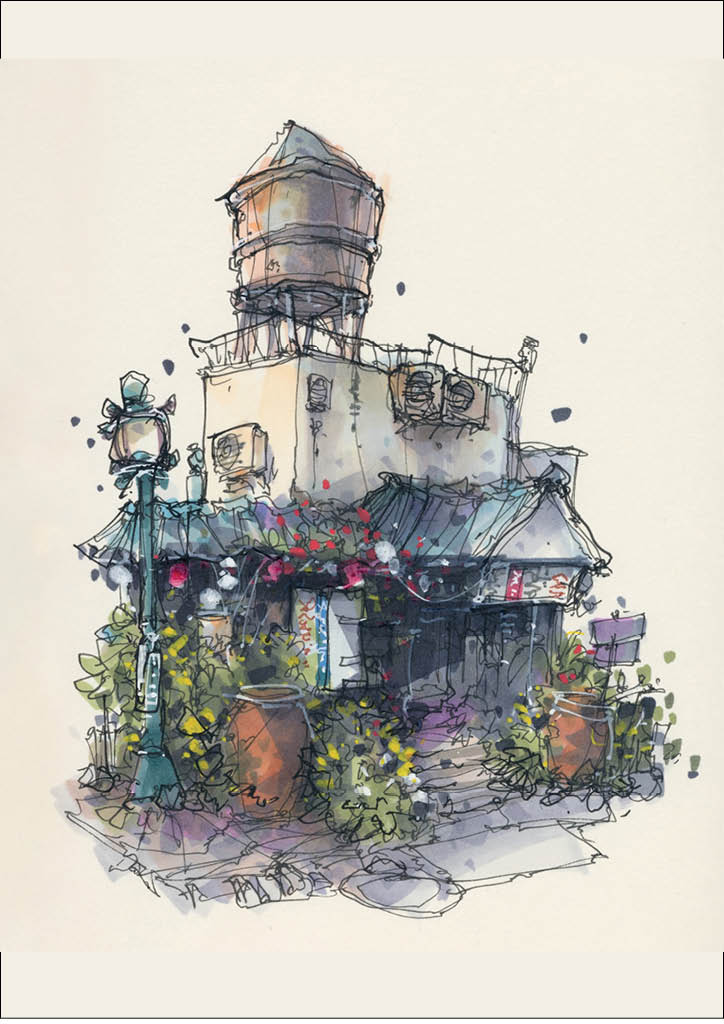
The journey towards drawing architecture was a vivid memory for him and it started in early 2016 when he decided on finally intensively training his traditional drawing skills. On the first few days of his frequent sketching, ideas started to dry up as his room, bookcase, model plane, and even vacuum cleaner took the spotlight as drawing subjects. The art block dissolved however after he sketched an old, local entrance door from a historic building that was demolished long ago.
Related Read: Mementos from The Past: The Importance of Heritage Buildings
“I received so much positive feedback on that! So then it became clear. Because I love architecture. Especially historic architecture, I had my subject matter clear before me! Because of all the sitting work that I do (behind a computer screen), I do lots of thirty-minute to one-hour walks. Just to keep fit too. And on my local walks, there are many amazing buildings here in my town. So that’s the stuff I started sketching intensively. Since I now had ‘stuff’ to show on socials, every day, I decided to share all that on Facebook and Instagram. That was also insurance for me to keep the pressure on of daily sketching! And that started to increase my following.”
“I want to create a feeling of playful joy.” Albert states, “Remember when you were a kid, and you just sketched or drew without any fear of what others might think? That’s what I try to convey in my sketches and also what I try to teach students of mine! If you find joy in what you do, you will have the best motivation for growing as an artist!”
So far, Albert’s work has been featured only once in a local art school where several hundreds of his sketches were displayed wall to wall. At the moment, Albert is heading a sketching course for Domestika and is about to release a book on how to sketch in his style.
Among the inspirations he has, Albert mentions a wide mix of traditional and digital artists from different disciplines. Some of these artists include Syd Mead, Nathan Fowkes, Thomas Pajdlhauser, Van Gogh, John Singer Sargent, Craig Mullins, and Ian McQue.
What does architecture do to our minds?
Some of these people are artists hypnotized and in love with the complexities of architecture seen across different countries or even just by the homes they walk past during their daily lives. As seen through these artists, some of which are just a small number in the larger circle of people entranced by good architecture, places and buildings have a big effect on one’s psyche.
According to Kate Jeffrey, a behavioral neuroscientist at University College London, people are creatures of the places they live in. Though making public spaces more enriching won’t magically banish negative feelings like loneliness or mental illnesses like depression, they can help make people feel more engaged and comfortable with their surroundings.
Related Read: The Book Stop Project: Creating Public Spaces as Platforms for Cultural Resilience
Notes from the Artist to All Artists:
From Rommel Cahilo:
“Find time to draw. You don’t need to be good at the start. Just remember, beautiful art is subjective. It will still boil down to how people will relate to your piece. And it doesn’t have to be relatable to everyone, it will find its right audience. So just draw subjects you feel you want to draw. Last will be, don’t be afraid to post your work online. Let them see your work because the world is not bound in your house or in your room, there are a lot more people who might appreciate it online.”
From Chris Henton:
“I believe it’s really important to draw what genuinely interests you. Especially if you’re going to be examining a reference image of an object for a long time, it’s crucial that you are inspired by it. The authentic interest in something then flows into your work and people get a sense of your perception of the building. My advice would be to draw what you would draw even if no one was going to see it.”
From Albert Kiefer:
“Never give up! Grab a sketchbook, and then another, and then another! Keep going. The most important thing is to always sketch and train your craft. You have heard this countless times before. But it is true! Look, I have a pretty busy schedule, a family, and stress from projects in the digital realms that call for new solutions (I love it!!). There’s always something that can keep you away from taking time to sketch. And especially if things don’t look great, it will be hard not to stop trying…Don’t stop, ever. First and foremost! Enjoy sketching! Second, pick a subject matter that you really like and that you feel you have a large supply of (so as not to lose time figuring out ‘what’ to draw). You can do this!”
Keep doing what you want to do. May it be as a sideline or full-time, one thing these artists relay is that life is full of inspiration, but you need to take the first step to actually go out and look. That goes for all people who are artists in their own way.


